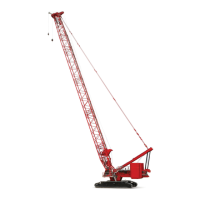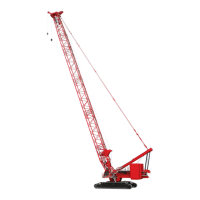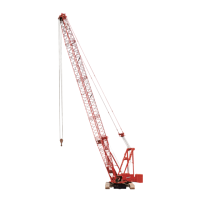HOISTS MLC300 SERVICE/MAINTENANCE MANUAL
5-48
Published 11-22-17, Control # 257-02
Periodic Comprehensive Inspection
The comprehensive inspection must be done by a qualified
person. The inspection must include pulling all the rope off
the drum and carefully inspecting the entire length.
The inspection must include the following:
• All points listed under Daily Inspection on page 5-47
• Inspection of the rope diameter (see Reduction in the
Rope Diameter on page 5-48)
• Comprehensive examination for broken wires (see
Broken Rope Wires on page 5-49
)
• End connections. Check for broken wires or severely
corroded, cracked, bent, worn, or improperly applied
end connections
• Areas subjected to rapid deterioration are as follows:
- Sections in contact with the saddles, equalizer
sheaves, or other sheaves where the wire rope
travel is limited
- Sections of the wire rope at or near the terminal
ends where corroded or broken wires may protrude
• Inspection of the boom sheaves, hook block sheaves,
gantry/mast sheaves, boom extension/jib sheaves, jib
strut sheaves, and hoist drums for wear
NOTE: Damaged sheaves or hoist drums can accelerate
wear and cause rapid deterioration of the wire
rope.
Any damage of the wire rope found must be recorded and a
determination made as to whether continued use of the rope
is safe (refer to Replacement Criteria on page 5-48
).
Determining the Frequency of Inspection
Intervals for comprehensive inspections may vary from
machine to machine. The inspection interval must be
determined by a qualified person and must be based on such
factors as the following:
• Expected rope life as determined by experience on the
particular installation or similar installations
• Size, nature, and frequency of lifts
• Rope maintenance practices
• Severity of the environment, such as the following:
- Variation in the temperature
- Continuous excessive moisture levels
- Exposure to corrosive chemicals or vapors
- Subjecting the wire rope to abrasive material
- Power line contact
• Exposure to abuse and shock loads, such as:
- High-velocity movement, such as hoisting or
swinging a load followed by abrupt stops
- Suspending loads while traveling over irregular
surfaces such as railroad tracks, potholes, and
rough terrain
- Moving a load that is beyond the rated capacity of
the lifting mechanism (overloading)
NOTE: Inspection intervals may also be predetermined by
state and local regulatory agencies.
Replacement Criteria
Deciding when a wire rope should be replaced is the
responsibility of the qualified person who is appointed to
review rope inspection records and evaluate rope condition.
The following are indications that the rope needs to be
replaced:
• Reduction in the rope diameter and excessive broken
wires (see Reduction in the Rope Diameter on page 5-
48 and Broken Rope Wires on page 5-49)
• Wear of one-third of the original diameter of outside
individual wires
• Kinking, crushing, birdcaging, or any other damage
resulting in distortion of the rope structure
• Evidence of any heat damage from any cause
• Severe corrosion as evidenced by pitting
• Independent wire rope core (IWRC) or strand core
protrusion between outer strands
• Obvious damage existing from any heat source
including—but not limited to—welding, power line strike,
or lightning
Reduction in the Rope Diameter
A reduction in rope diameter is often the first outward sign
that the rope core is damaged. Reduction in the rope
diameter can be caused by loss of core support, internal or
external corrosion, or wear of the outside wires.
WARNING
Falling Load Hazard!
All wire rope will eventually deteriorate to a point where it
is no longer usable.
• As a wire rope approaches the end of its useful life,
do inspections more frequently.
• A comprehensive inspection of each wire rope must
be performed at least once a year.
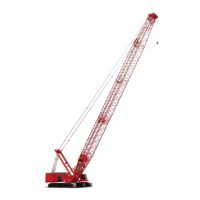
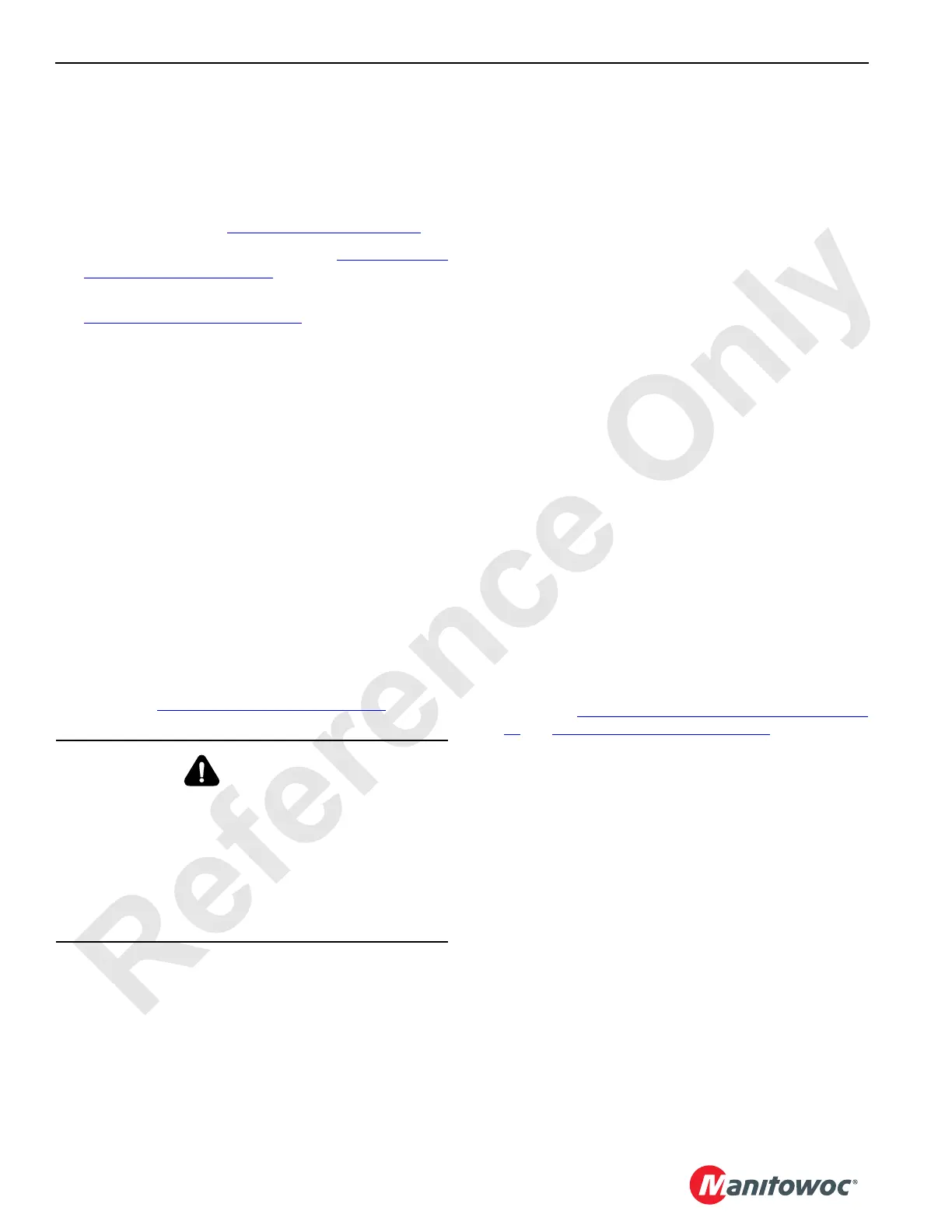